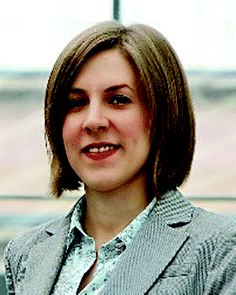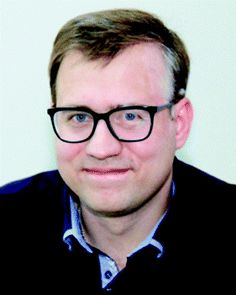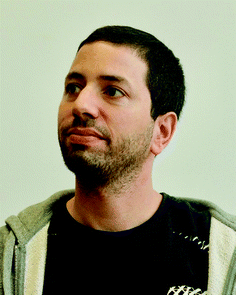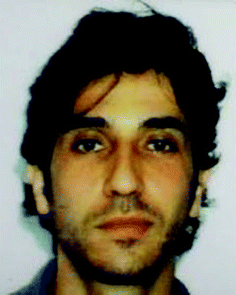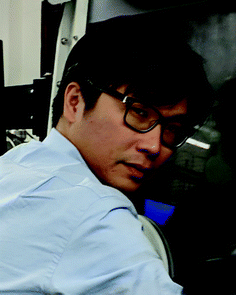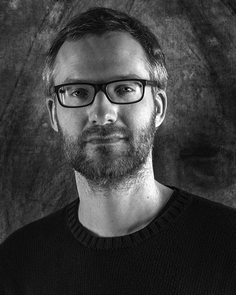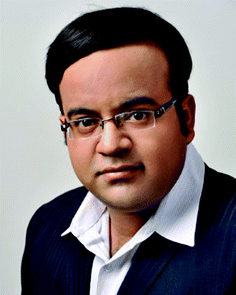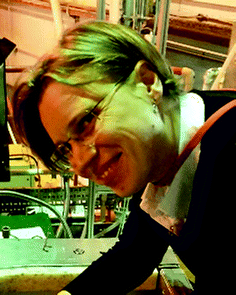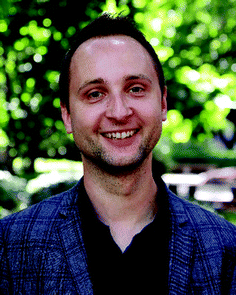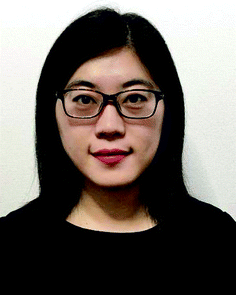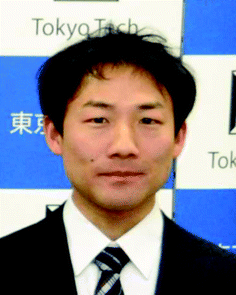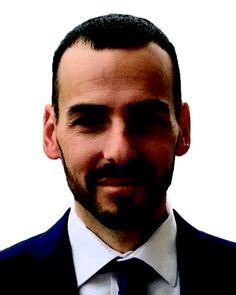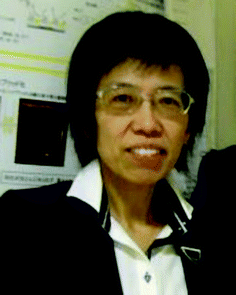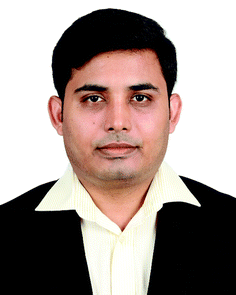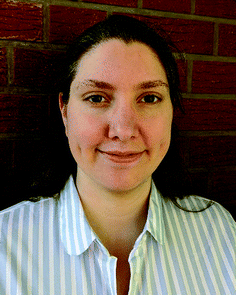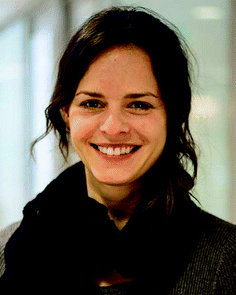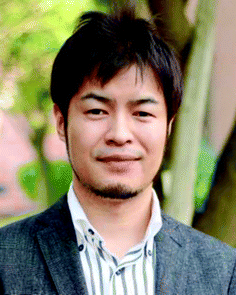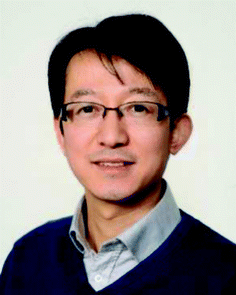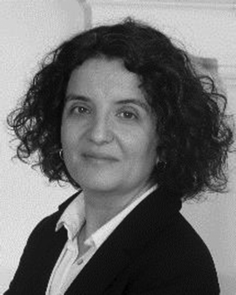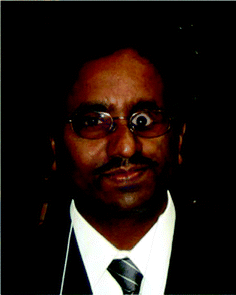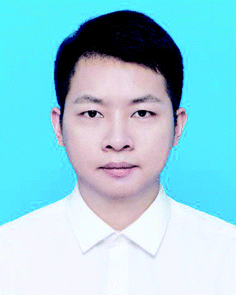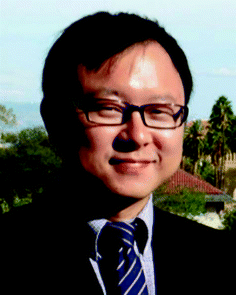Physical Chemistry Chemical Physics profiles: contributors to the Emerging Investigators 2020 issue
Physical Chemistry Chemical Physics is very pleased to welcome you to the inaugural Emerging Investigators themed collection, which highlights the excellent research being carried out by early career researchers in physical chemistry, chemical physics and biophysical chemistry.All contributors were nominated for the prestigious PCCP Emerging Investigator Lectureship and invited to contribute to this themed collection by the Editorial Board. These researchers are making outstanding contributions to physical chemistry, chemical physics and biophysical chemistry and are the rising stars of these fields.
Their profiles are shown in this Editorial and we congratulate them all on being featured. We wish them every success in their future research.
Chandan Bera is working as a scientist at the Institute of Nano Science and Technology, Mohali. He received his MSc degree from the Indian Institute of Technology, Bombay, in 2007, and PhD degree from Ecole Centrale Paris in 2010. Currently, he is working on thermal and electron transport mechanisms in alloy materials, and is developing a simple predictive model for thermal and electron transport in 2D and nanostructured materials for the efficient design of thermoelectric devices. His group is also interested in electron and spin transport properties in heterostructure interfaces, and is working on the electronic and spintronic properties of the interface from the atomistic calculation based on density functional theory.
Katharina Boguslawski is an associate professor at the Institute of Physics, NCU in Toruń. She obtained her PhD in chemistry in 2013 from ETH Zurich. After being a postdoctoral fellow at McMaster University (Canada), she joined the Institute of Physics (NCU) in 2016 to establish her own research group. In 2019, she obtained her habilitation in physics. Boguslawski has been awarded various research grants and stipends, like an MSCA-IF-EF. Her scientific activity covers the development of electronic structure methods for ground and excited states at the interface of physics and chemistry.
Yury A. Budkov obtained his PhD from the Institute of Solution Chemistry of the Russian Academy of Sciences, Ivanovo, Russia, in 2013. After that he was invited to the Max Planck Institute of Applied Mathematics in Computational Physical Chemistry and Biophysics Group, Germany, as an invited researcher. In 2015 he took a senior lecturer position at the School of Applied Mathematics of HSE, Moscow, Russia, and in 2017 he became an associate professor at the same University. Budkov defended his doctorate thesis at the School of Applied Mathematics of HSE. In 2019 he took the position of head of laboratory in the Institute of Solution Chemistry of the Russian Academy of Sciences. One of his papers was published in the themed collection of Emerging Leaders 2018 in the Journal of Physics: Condensed Matter. His research focuses on statistical mechanics of molecular fluids, polymers, and ion–molecular solutions.
Federico Calle-Vallejo, following an undergraduate degree in chemical engineering in Colombia at UPB, completed his PhD at the Technical University of Denmark with Jens K. Nørskov and Jan Rossmeisl. He has worked at both Leiden University with Marc Koper's group, and at École Normale Supérieure de Lyon with Philippe Sautet's group for several post-doctorates. Calle-Vallejo is currently a Ramón y Cajal researcher at the University of Barcelona. His research focuses on the structure-sensitive computational simulation of electrocatalytic reactions such as: oxygen reduction and evolution, hydrogen evolution, CO2 and CO reduction, CO oxidation and nitrate and NO reduction.
Giuseppe Cavallaro is assistant professor at the Department of Physics and Chemistry, University of Palermo, Italy. He was a research associate at the Institute of Micromanufacturing, Louisiana Tech University, (USA) and Institut fur Chemie, Technische Universitat Berlin (Germany). His research activities focus on nanoclays and polymer/nanoparticle interactions. He is author of 77 publications in peer-reviewed international journals. Based on the source Scopus, his h-index is 31.
Paddy K. L. Chan obtained his bachelor degree in mechanical engineering from the University of Hong Kong, and PhD degree in mechanical engineering from the University of Michigan. He is currently an associate professor at the University of Hong Kong, and is leading the Laboratory of Nanoscale Energy Conversion Devices and Physics. His research focuses on the fabrication techniques of high performance OFETs and their potential applications. In 2020, Chan received the Outstanding Young Researcher award from HKU. In 2016, he also received the Research Output Award from HKU.
Basile F. E. Curchod was born in Vevey (Switzerland). He did his PhD at EPFL (Switzerland) and was awarded in 2014 an Early PostDoc grant to join Stanford University (USA). In December 2015, he initiated a short postdoctoral stay at the Max Planck Institute in Halle (Germany). In May 2016, he joined the University of Bristol (UK) as a Marie Skłodowska-Curie Fellow. In November 2017, he became assistant professor at Durham University (UK) and secured an ERC Starting Grant in 2018. Curchod's research focuses on the development and application of theoretical methods to simulate the dynamics of molecules beyond the Born–Oppenheimer approximation (http://www.in-silico-photochem.com).
Siddhartha Das is currently an associate professor in the Department of Mechanical Engineering, University of Maryland, College Park, USA. Siddhartha received his PhD from the Indian Institute of Technology Kharagpur (IITKGP) in 2010, and postdoctoral training from the University of Twente (2009–2011), and as a Banting Fellow from the University of Alberta (2011–2013). Das's research interests are in polyelectrolyte brushes, electrokinetic transport, interactions of water with nanomaterials, lipid bilayers, and additive manufacturing. As recognition to his work, Das has received several awards including being inducted as a Fellow of the Royal Society of Chemistry and receiving the IITKGP Young alumni Award.
Katharina Edkins received her PhD in pharmaceutical solid state and pre-formulation from the University of Innsbruck, and joined Durham University and subsequently Wuerzburg University as a postdoctoral research associate. She started her independent career as a lecturer in pharmaceutics at Durham University in 2014, and moved to a senior lectureship at Queen's University Belfast, recently joining the University of Manchester as a reader. Her research focuses on molecular recognition in pharmaceutical materials ranging from different crystal forms to soft matter. She has been awarded the prestigious BTM Willis prize for neutron scattering in recognition of her work on pharmaceutical crystalline hydrates.
Lars Goerigk is a senior lecturer at the School of Chemistry, University of Melbourne. In 2011, he obtained his PhD in the group of Professor Stefan Grimme, Münster, and then relocated to the University of Sydney to work with Professor Jeffrey Reimers before joining his present institution in 2014. His area of expertise is theoretical and computational quantum chemistry with a focus on density functional theory for ground and excited states. Goerigk is a former Discovery Early Career Researcher Award Fellow (Australian Research Council), a recipient of the 2017 Physical Chemistry Division Lectureship (Royal Australian Chemical Institute), and a 2019 Le Fèvre Medal awardee (Australian Academy of Science), the highest Australian Chemistry award for early-career researchers.
Brianna Heazlewood is an EPSRC (Engineering and Physical Sciences Research Council) Early Career Fellow in the Department of Chemistry at the University of Oxford. She completed her PhD at the University of Sydney, Australia. Brianna was awarded a series of fellowships at Oxford – a Royal Commission for the Exhibition of 1851 Research Fellowship, a Leverhulme Trust Early Career Fellowship and her current EPSRC Fellowship – which enabled her to start an independent research group. Her research focuses on cold chemistry, examining how reactions occur under controlled conditions.
Yanyan Jiang completed her PhD in Professor Martina Stenzel’s group at the School of Chemical Engineering, University of New South Wales, Australia, in 2016. She was awarded (2016) Japan Society for Promotion of Science (JSPS) Postdoctoral Research Fellowship at Kyoto University under the supervision of Professor Itaru Hamachi. Since 2018, she has been appointed as a full professor of materials science and engineering at Shandong University. Her research interests are in the synthesis of functional nanoparticles serving as anticancer drug carriers, biosensors, catalysts; and theoretical studies of the mechanism and properties of these nanoparticles.
Iker León obtained his BSc in Chemistry from the University of the Basque Country in 2006 and his PhD in 2011 under the supervision of Dr José Andrés González and Professor Fernando Castaño. He was a postdoctoral fellow under the supervision of Professor Lai-Sheng Wang at Brown University, in 2012–2014. During 2015–2016 he was a recipient of a Juan de la Cierva Fellowship at ICFO under the supervision of Professor Jens Biegert. In 2017, he worked as a postdoctoral researcher at the University of Valladolid under the supervision of Professor José Luis Alonso, where he was appointed as an assistant professor of physical chemistry in 2019. His research focuses on gas-phase studies of molecular complexes and biomolecules using spectroscopic techniques.
Kenta Mizuse received his PhD in Science from Tohoku University in 2011. He moved to the Institute for Molecular Science as an assistant professor. In 2015, he joined the Department of Chemistry, Tokyo Institute of Technology as an assistant professor. He was awarded an 11th PCCP prize from the Royal Society of Chemistry and the Chemical Society of Japan in 2017. His research interests include visualization and control of ultrafast dynamics of molecular systems, development of new ultrafast imaging techniques, and laser spectroscopy of gas-phase molecular clusters.
Alberto Roldan's research interest is in dynamic processes on surfaces and nanostructures, especially those relevant to heterogeneous catalysis. He employs computational simulations to link materials composition and atomic structures to resilience and reactivity with particular focus on clean energy and sustainable industry.
Ken Sakaushi is a senior researcher at the National Institute for Materials Science (NIMS), Japan. He read physics (BSc, 2008)/chemistry (MSc, 2010) at Keio University, and completed his PhD at TU Dresden in 2013 with a DAAD fellowship. Then, he joined MPI of Colloids/Interfaces on a Max-Planck-Society Fellowship. In 2015, Sakaushi joined NIMS as a tenured member. His research focuses on various fundamental aspects of electrode process science. Besides academic activities, he loves classical music, reading books and playing football. Ken is recognized by awards including the ISE Travel Award for Young Electrochemists, PCCP Prize, and as a PCCP Emerging Investigator. For further information: https://sites.google.com/site/sakaushiken/.
Hisako Sato received her DSc from Hokkaido University, Hokkaido, Japan, in 1992 and her EngD from the University of Tokyo, Tokyo, Japan, in 1999. In 1983, she joined Hitachi, Ltd, Tokyo, Japan. She moved to the University of Tokyo as a research fellow in 2002. From 2003–2006, she was a CREST researcher by JST. She was a PRESTO project leader by JST from 2006–2010. In 2009, she joined Ehime University as an associate professor in the Graduate School of Science and Engineering. From 2010, she has been a full professor at Ehime University. Her current interest is the application of solid-state VCD and time-step VCD methods to unravel the dynamic aspects of chiral molecular aggregates or inorganic layered materials.
Gábor Schuszter obtained his PhD in chemistry in 2014 at the University of Szeged (USZ). His thesis focused on pattern formation in aqueous phase autocatalytic reactions. He was appointed as an assistant lecturer in 2014. He also spent two years as a postdoc (2015–2016) at the Universitá Libre de Bruxelles where he started to investigate precipitation reactions under flow conditions. He became an assistant professor at USZ in 2019. His exploration on precipitation kinetics started in 2017 by elaborating visual experimental methods. His ultimate aim is to facilitate the production of tailored precipitate structures by maintaining appropriate time scale matching between transport processes and precipitation reactions.
Prabhat K. Singh is currently working as a scientist at the Radiation and Photochemistry Division of Bhabha Atomic Research Centre, Mumbai, India. Singh received his doctoral degree from Homi Bhabha National Institute, India, in 2011 for his work in the field of ultrafast fluorescence spectroscopy. His research interests include supramolecular chemistry and use of self-assembled materials for designing optical sensors for bio-sensing and chemo-sensing applications. Singh has authored more than 70 publications in peer-reviewed international journals. In recognition of his contribution, he has been inducted into all three national science academies of India in their younger league. He was also recently selected for the membership of the prestigious Global Young Academy, Berlin, Germany.
Amanda Steber received her PhD in physical chemistry in 2014 from the University of Virginia, USA. There she worked on projects pertaining to the development of chirped-pulse rotational spectrometers and their use in astrochemistry under the direction of Professor Brooks Pate. After completing her degree, she became a Louise Johnson fellow in Hamburg, Germany, where she continued her work on instrument development and chirped-pulse rotational spectroscopy in the group of Professor Melanie Schnell. In 2019, she became a research scientist in Professor Schnell's group, and she serves as the sub-group leader of the astrochemistry research line.
Stella Stopkowicz received her PhD in theoretical chemistry from the University of Mainz (Germany). She joined the University of Oslo (Norway) for a postdoctoral stay in 2012. In 2015 she became a junior group leader at the University of Mainz. Her research group focuses on the development and the application of highly-accurate quantum-chemical methods for the treatment of atoms and molecules in strong magnetic fields. Photo credit: Centre of advanced study (CAS), Camilla Kottum Elmar.
Toshiki Sugimoto is an associate professor (principal investigator) at the Institute for Molecular Science. He received his BS degree in 2007 from Kyoto University, and PhD degree in 2011 from the University of Tokyo. After few months research as a postdoctoral fellow of the Japan Society for the Promotion of Science at the University of Tokyo, he worked at Kyoto University as an assistant professor until 2018. He works on state-of-the-art molecular spectroscopy and nanoscopy of interfacial water and hydrogen systems. His main research interest is unveiling unique structures, physicochemical properties and quantum dynamics of interfacial hydrogen bonds.
Haining Tian is an associate professor at Uppsala University, Sweden, leading a research group on molecular devices for artificial photosynthesis. He obtained his PhD in applied chemistry at Dalian University of Technology (DUT) in 2009 and then moved to the Royal Institute of Technology (KTH) as a postdoc and senior researcher until 2014. He has been awarded the Göran Gustafsson Prize for young researchers (2016, 2020), the Young Investigator from European Photochemistry Association (2019) and the Wallenberg Academy Fellow (2019). His research interests focus on the development and investigation of sustainable materials for solar energy conversion and storage.
Cristina Trujillo obtained her PhD (cum laude) in theoretical and computational chemistry in 2008 at the Universidad Autónoma de Madrid (UAM). During 2008–2016, she held several postdoctoral positions in Spain, Prague and Ireland. She joined Trinity College Dublin in 2019 after being awarded a Science Foundation of Ireland-Starting Investigator Research Grant. She has received the 2019 L’Oréal-UNESCO For Women in Science UK and Ireland Highly Commended certificate. She has expertise in fundamental topics within computational organic chemistry. Trujillo's research group lays on the application of computational techniques in the design of organocatalysts as well as prediction and control of catalytic processes. Homepage: https://www.trujilloresearchgroup.com, Twitter handle: http://www.twitter.com/Trujillo_Group.
Pannuru Venkatesu was awarded his PhD in 1995 at Sri Venkateswara University, Department of Chemistry, Tirupati, India. At present, he is an associate professor in the Department of Chemistry, University of Delhi, Delhi, India. Currently, he has been actively working in the area of protein stability in osmolytes, ionic liquids and nanoparticles. He is also working on polymer phase transition in ionic liquids, proteins and osmolytes. These studies are highly useful tools for the cure of disorders due to misfolded or aggregated proteins in human bodies. He has published about 195 research publications in internationally reputed journals.
Yujun Xie received his BS degree from Huazhong Agricultural University in 2013, and PhD degree from Wuhan University in 2018 under the supervision of Professor Zhen Li. In 2018, he joined the Institute of Molecular Aggregation Science, Tianjin University. His research focuses on the synthesis of novel organic photoelectric materials with stimuli-responsive room-temperature phosphorescent, thermally activated delayed fluorescence properties, as well as the theoretical calculation characteristics.
Bo Yang received his PhD in physical chemistry from Queen's University, Belfast, in 2013. Then, he worked as a postdoctoral research fellow at SUNCAT Center, Stanford University. He joined the School of Physical Science and Technology at ShanghaiTech University as an assistant professor in 2015, working on multi-scale modelling of catalytic reactions at the interface between the solid catalysts and gas/liquid reaction intermediates. He has been the recipient of several major awards, including Dorothy Hodgkin Postgraduate Awards, the EFCATS PhD Student Award, the Royal Irish Academy Young Chemist's Prize, the Shanghai Pujiang Talent and the Shanghai Young Eastern Scholar.
We are delighted to present this collection of articles from the 2020 Emerging Investigators that covers the breadth of the field, providing insight into all areas of physical chemistry, chemical physics and biophysical chemistry. We very much hope that you enjoy reading them.
| This journal is © the Owner Societies 2020 |


